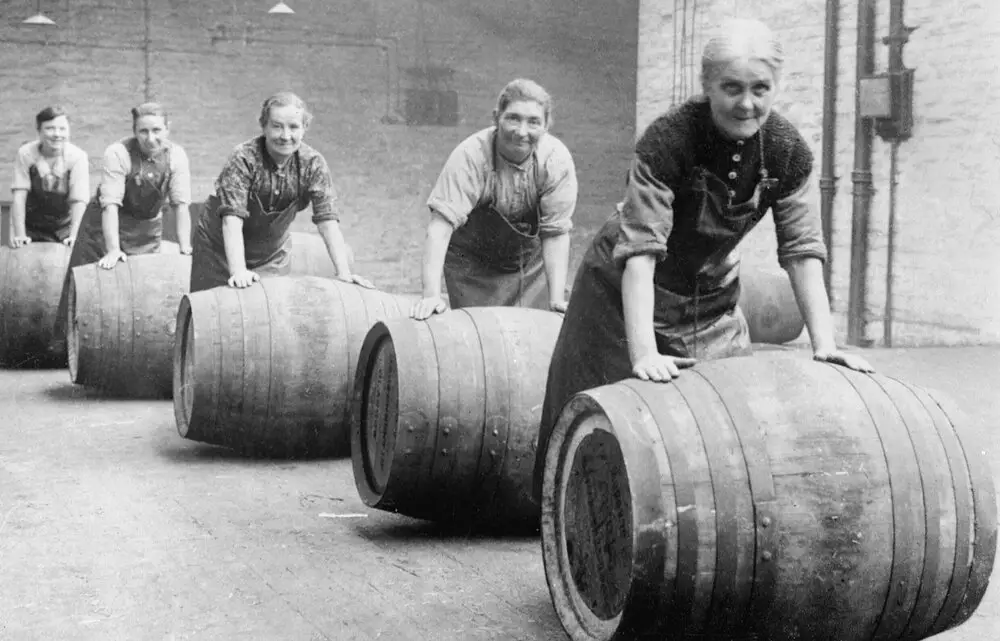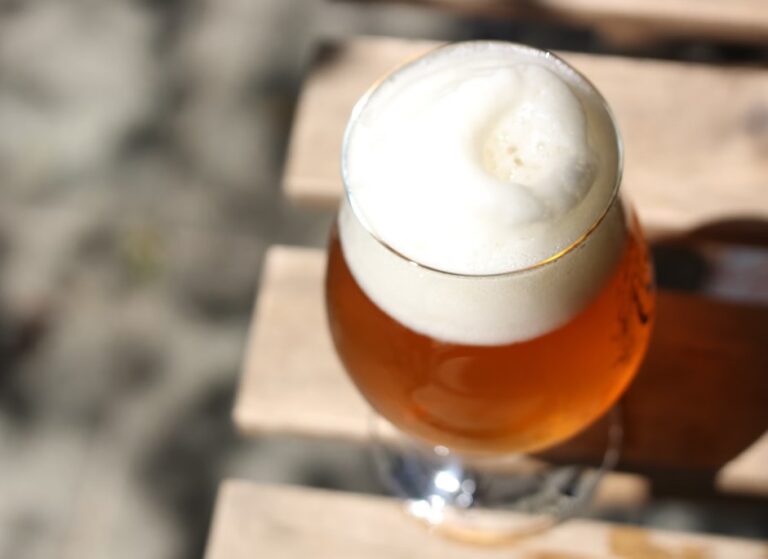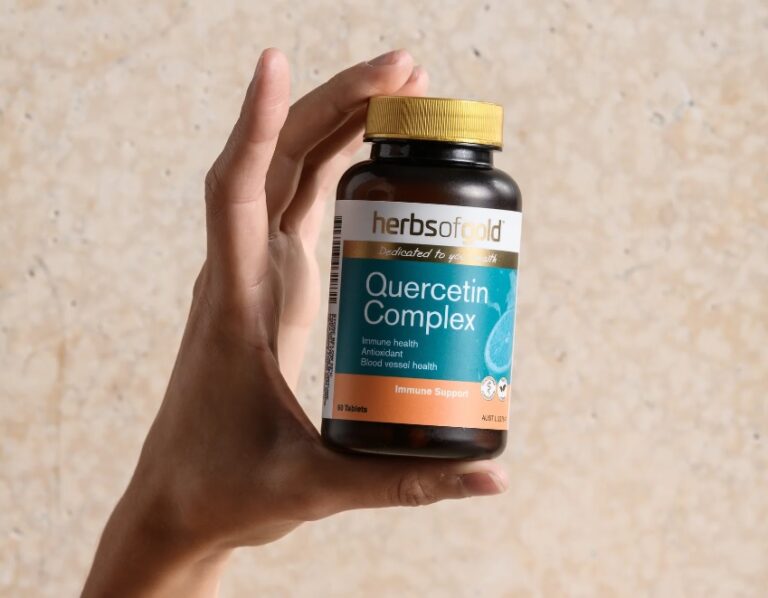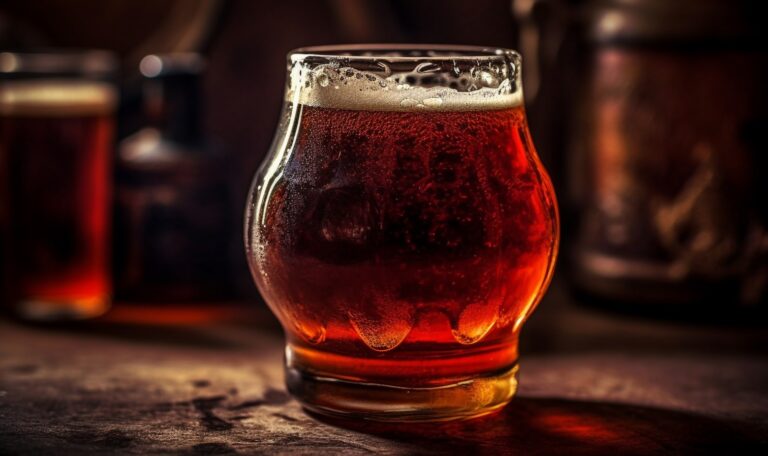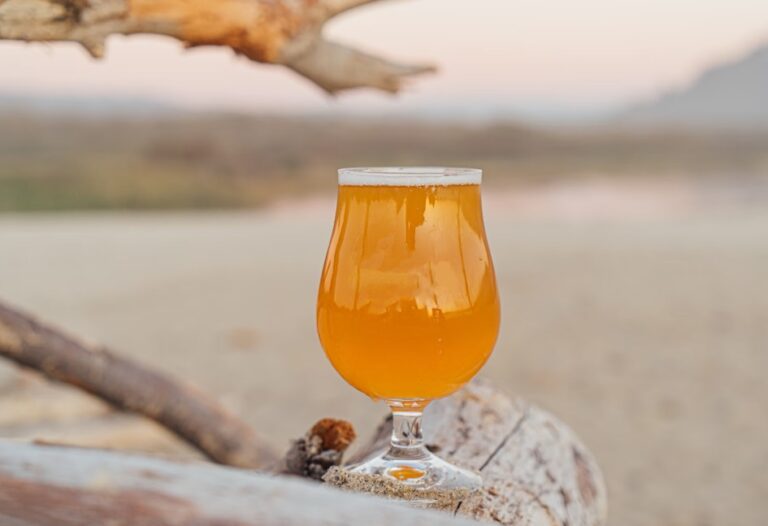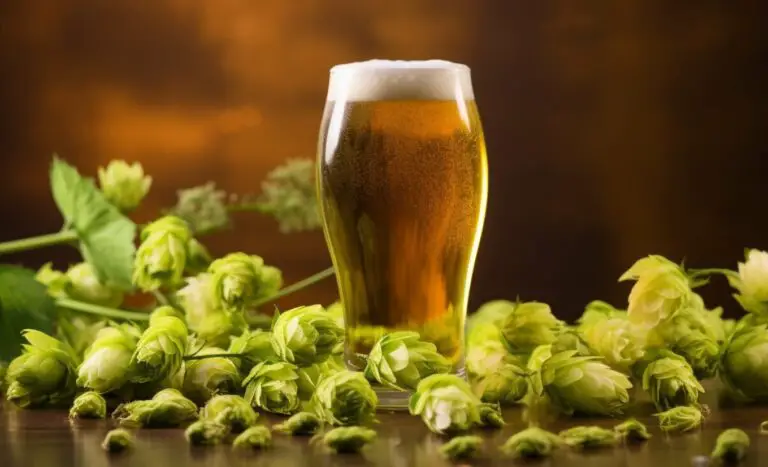What Are The 5 Main Ingredients in Beer?
Beer is one of the oldest and most widely consumed alcoholic beverages in the world, and its popularity can be attributed to its unique and diverse flavors (yeah, beer is bitter, but not only bitter!).
But what exactly goes into making this beloved beverage? What are the 5 main ingredients in beer? There are five main ingredients in beer that contribute to its distinct taste and character (however, according to the German Purity Law enacted in April 1516 by Bavarian Duke Wilhelm IV, the only ingredients used in beer production should be water, barley, and hops).
First and foremost is water, which makes up the majority of beer’s composition. The mineral content and quality of the water used affects the overall flavor and mouthfeel of the beer. Second is malted barley, a type of grain that provides the basic source of starch and sugars needed for fermentation. Next is yeast, which consumes the sugars in the malted barley and produces alcohol and carbon dioxide during the fermentation process. Hops, the fourth ingredient, contribute bitterness, aroma, and flavor to balance the sweetness of the malt.
Lastly, we have additional ingredients such as fruits, spices, or herbs that can be added to create unique and experimental beer styles. By understanding these five key ingredients and their roles, beer enthusiasts can better appreciate and explore the vast world of flavors and styles that beer has to offer.

Definition of Main Ingredients
When it comes to beer, there are five main ingredients that are crucial to its flavor, aroma, and overall quality. These ingredients, along with the brewing process, give each beer its unique taste and characteristics. Let’s take a closer look at what these main ingredients are and how they contribute to the art of brewing.
1. Malted Barley:
Malted barley is the primary ingredient in beer. It is responsible for providing the most significant source of fermentable sugars, which yeast consumes during the fermentation process to produce alcohol and carbon dioxide. Barley is soaked in water, sprouted, and then dried in a process known as malting. This activates enzymes within the barley and converts its starches into fermentable sugars.
2. Hops:
Hops are the flowers of the hop plant, and they add bitterness, aroma, and flavor to beer. Hops help to balance the sweetness of the malted barley and act as a natural preservative. They also contribute to the beer’s aroma, providing floral, herbal, or citrus notes. Different varieties of hops can significantly impact the taste and smell of a beer.
3. Yeast:
Yeast is responsible for the fermentation process, where it converts the sugar from the malted barley into alcohol and carbon dioxide. There are two primary types of yeast used in brewing: ale yeast and lager yeast. Ale yeast ferments at warmer temperatures, typically between 15-24 degrees Celsius (59-75 degrees Fahrenheit), and produces fruity and complex flavors. Lager yeast, on the other hand, ferments at cooler temperatures, usually between 7-13 degrees Celsius (45-55 degrees Fahrenheit), resulting in a clean and crisp taste.
4. Water:
Water, though often overlooked, plays a crucial role in beer brewing. It makes up approximately 90% of beer’s volume and affects the beer’s mineral content and pH levels. Depending on the beer’s style, different water profiles can be used to achieve specific characteristics. Soft water, with low mineral content, is preferred for pale lagers, while harder water with more minerals is suitable for brewing certain ales.
5. Other Ingredients:
While malted barley, hops, yeast, and water are the primary ingredients, there are often additional ingredients used to create unique beer styles or flavor profiles. These can include fruits, spices, herbs, or even coffee and chocolate. These additional ingredients can enhance the beer’s taste and aroma, adding complexity and depth to the brew.
In conclusion, the main ingredients in beer – malted barley, hops, yeast, water, and sometimes additional ingredients – work together during the brewing process to create a wide range of beer styles and flavor profiles. These components, combined with specific brewing techniques, give beer its diverse and exciting characteristics. So, the next time you enjoy a cold one, take a moment to appreciate the craftsmanship and thought that goes into those main ingredients that make every sip so enjoyable.
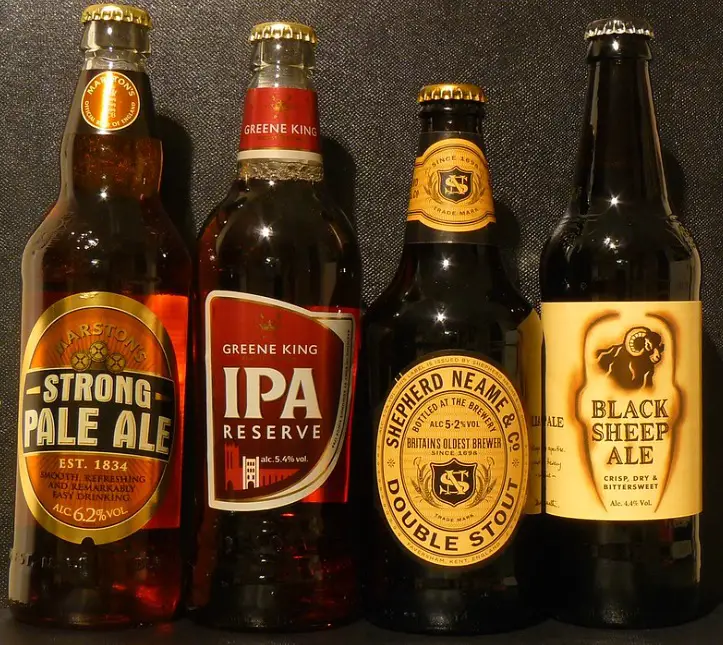
1. Water
When it comes to the main ingredients in beer, water often gets overlooked. After all, it makes up about 90% of the beer’s volume, so it’s easy to take it for granted. However, water plays a crucial role in the brewing process, affecting everything from the beer’s mineral content to its pH levels.
The quality of water used in brewing can greatly impact the final product. Different styles of beer require different water profiles to achieve specific characteristics. For example, pale lagers typically benefit from soft water with low mineral content, as it helps create a clean and crisp taste. On the other hand, certain ales may benefit from the use of harder water with more minerals, resulting in a more robust and flavorful brew.
Water’s mineral content, including ions such as calcium, magnesium, and sulfates, also affects the beer’s taste and mouthfeel. Brewers carefully consider the mineral content of their water source or make adjustments to achieve a desired profile. For example, the sulfates in water can enhance the bitterness of hops, leading to a crisper and more pronounced hop character.
In addition to its mineral content, water’s pH level is another important factor in brewing. The pH level influences the activity of enzymes during mashing, where the malted barley’s starches are converted into fermentable sugars. Ideally, brewers aim for a pH level around 5.2-5.6 to optimize enzyme activity and ensure a successful conversion.
But it’s not just the chemical aspects of water that matter. The source of the water can also add unique characteristics to a beer. For example, water from certain regions may have distinct mineral profiles, contributing to specific regional beer styles. Think of the soft water of Pilsen in the Czech Republic, renowned for its pale lagers, or the hard water from Burton-on-Trent in England, known for its excellent bitter ales.
So next time you raise a glass of your favorite beer, take a moment to appreciate the often-underestimated role of water. It’s an essential ingredient that influences everything from the beer’s taste to its mouthfeel. Brewing truly is a balance of science and art, and water is a key player in creating that perfect pint. Cheers!
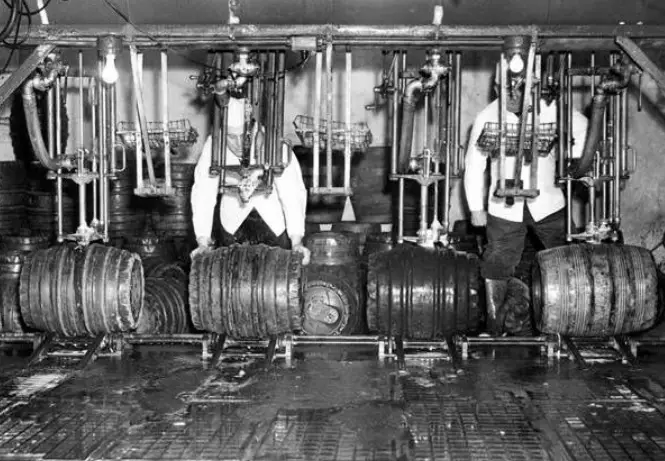
Soft Water and Hard Water
When it comes to brewing beer, water is much more than just a thirst quencher. It plays a vital role in shaping the flavor and characteristics of the final brew. One crucial aspect of water is its mineral content, which varies depending on its source. There are two main types of water that brewers often consider: soft water and hard water.
Soft water is low in mineral content, specifically calcium and magnesium ions. This type of water is preferred for brewing pale lagers, as it helps create a clean and crisp taste. Soft water also allows the hops to shine, enhancing their bitterness and aroma. In fact, renowned beer styles like Pilsner from the Czech Republic are traditionally brewed with soft water. The high mineral content found in hard water would interfere with the delicate flavor profile of these light and refreshing beers.
On the other hand, hard water has higher levels of minerals such as calcium and magnesium. It provides a more robust and fuller-bodied character to the beer, making it a preferred choice for certain ales. Bitter ales, for example, benefit from the mineral-rich composition of hard water, which harmonizes with the hops to create a more pronounced and complex flavor profile. The infamous Burton-on-Trent in England, known for its excellent bitter ales, has naturally hard water, making it an ideal location for brewing these distinct beers.
But why do mineral variations in water have such a significant impact on beer? It all comes down to chemistry. During the brewing process, water interacts with the malted barley to extract fermentable sugars. The mineral content of the water affects this process, influencing enzyme activity during mashing. The ideal pH level for enzyme activity is around 5.2-5.6, and different mineral compositions can help achieve this sweet spot. It’s fascinating how something as simple as water chemistry can influence the final outcome of a beer.
So, the next time you crack open a cold brew, take a moment to appreciate the role that water has played in its creation. Whether it’s the soft water of Pilsen or the hard water of Burton-on-Trent, water’s mineral content adds that special touch to beloved beer styles around the world (and there’s nothing poisonous!). It’s a reminder that, besides the traditional ingredients like malted barley and hops, water is an essential component in crafting the perfect pint.
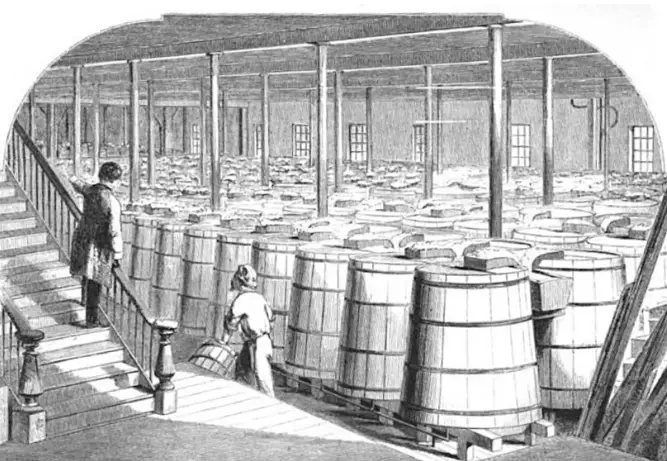
Mineral Content in Water for Beer Making
When it comes to brewing beer, there’s more to water than just H2O. The mineral content in water plays a crucial role in shaping the flavor profile of your favorite pint. Whether you prefer a light and crisp lager or a robust and flavorful ale, the minerals in the water can make all the difference.
To understand this better, let’s dive into some chemistry. Water interacts with the malted barley during the brewing process to extract fermentable sugars. This extraction process is influenced by the mineral content in the water. Different minerals affect the enzyme activity during mashing, which is the process of breaking down starches into sugars.
The ideal pH level for enzyme activity during mashing is around 5.2-5.6. And here’s where the mineral content in water comes into play. Depending on the mineral composition, the water can help achieve this sweet spot and create the perfect conditions for sugar extraction. It’s like finding the right balance for the magic to happen.
So, what happens if your water is low in minerals, like soft water? Well, soft water, with low levels of calcium and magnesium ions, is ideal for brewing pale lagers. This type of water creates a clean and crisp taste, allowing the hops to shine and enhancing their bitterness and aroma. That’s why famous beer styles like Pilsner from the Czech Republic are traditionally brewed with soft water. Those brewers know what they’re doing!
On the other hand, if your water is high in minerals, like hard water, it can give your beer a more robust and fuller-bodied character. Hard water, rich in calcium and magnesium, is a preferred choice for certain ales. Bitter ales, for instance, benefit from the mineral-rich composition of hard water. The minerals in hard water harmonize with the hops to create a more pronounced and complex flavor profile.
To give you an example, let’s talk about Burton-on-Trent in England. This place is renowned for its excellent bitter ales. And do you know why? It’s because Burton-on-Trent has naturally hard water. The high mineral content of their water gives their beers that distinct flavor that beer enthusiasts crave.
So, the next time you’re enjoying your favorite beer, take a moment to appreciate the role of water’s mineral content in its creation. The chemistry behind it is truly fascinating. It just goes to show that even the most basic ingredient can have a significant impact on the final outcome.
So, cheers to water and its mineral content, the unsung hero of the beer-making process!
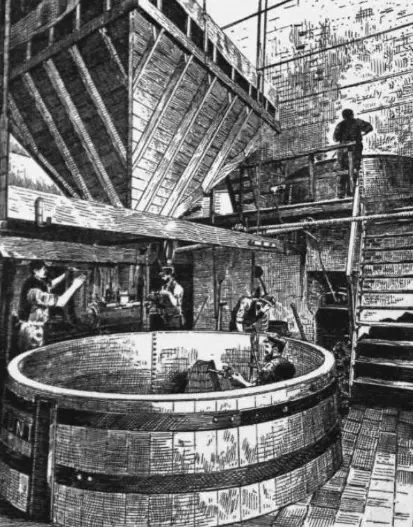
2. Malted Barley
Speaking of basic ingredients, let’s talk about one of the stars of the beer show – malted barley. This powerhouse ingredient plays a crucial role in shaping the flavor, color, and body of your beloved brew.
But first, what exactly is malted barley? Well, it all starts with barley grains. These little powerhouses are soaked in water, allowing them to sprout and awaken their potential. The sprouted barley is then carefully dried and ground into a coarse powder called malt.
Now, what makes malted barley such a game-changer in the brewing process? It’s all about the enzymes! Enzymes in malted barley are responsible for breaking down starches into fermentable sugars during mashing. This process is essential because yeast feeds on these sugars during fermentation, converting them into alcohol and carbon dioxide.
Speaking of fermentation, here’s a fascinating fact for you. The type of malted barley used can greatly influence the flavor profiles of different beer styles. Lighter malts, like pale malt, create a crisp and clean taste. They’re commonly used in pale lagers and pilsners, giving these beers their smooth and refreshing character.
On the other end of the spectrum, darker malts, such as roasted or chocolate malts, add depth and richness to beers like stouts and porters. These malts bring out flavors of coffee, chocolate, and even hints of caramel. Imagine indulging in a velvety, dark beer with notes of roasted goodness – it’s a taste bud party!
But malted barley isn’t just about flavor. It’s also responsible for the color and body of your favorite brews. The longer the barley grains are roasted, the darker the beer will be. It’s like creating a beautiful sunset in a glass!
Now, let’s dive into some numbers. On average, malted barley makes up around 90% of the total grain bill in beer production. That’s a significant chunk! And the amount of malt used can impact the alcohol content too. Generally, more malt equals more sugars for yeast to munch on, resulting in a higher alcohol by volume (ABV).
So, the next time you sip on your go-to beer, take a moment to appreciate the role of malted barley. It’s not just a simple grain – it’s a powerhouse ingredient that sets the stage for a world of flavors, colors, and body. Cheers to the humble yet mighty malted barley!
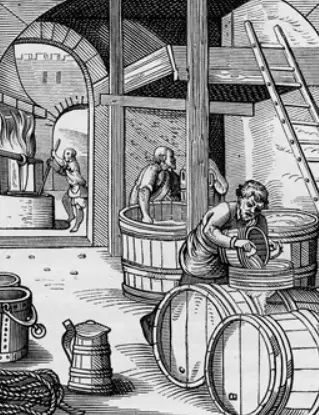
Role of Malted Barley in Beer Production
The role of malted barley in beer production cannot be overstated. It is the star of the show, the main ingredient that brings flavor, color, and body to your favorite brews. But what exactly does malted barley do in the brewing process?
Firstly, let’s talk about enzymes. Enzymes present in malted barley are crucial for converting starches into fermentable sugars during mashing. These sugars serve as food for the yeast during fermentation, resulting in the production of alcohol and carbon dioxide. Without malted barley and its enzymes, we wouldn’t have the delightful fizz and intoxicating effects that we love in beer.
But it doesn’t stop there. The type of malted barley used can impact the taste and aroma of different beer styles. Lighter malts, like pale malt, are responsible for creating a crisp and clean taste. They are commonly found in pale lagers and pilsners, giving these beers their refreshing character.
On the other hand, darker malts, such as roasted or chocolate malts, add depth and richness to beers like stouts and porters. These malts bring out flavors of coffee, chocolate, and even hints of caramel. Just imagine sipping on a velvety, dark beer with the perfect balance of roasted goodness – it’s a taste bud party!
But malted barley is not just about flavor. It also plays a crucial role in determining the color and body of your brew. The longer the barley grains are roasted, the darker the beer will be, creating a visually appealing experience.
Now let’s get into some numbers. On average, malted barley makes up approximately 90% of the total grain bill in beer production. That’s a significant portion! And the amount of malt used can impact the alcohol content too. Generally, more malt translates to more sugars for yeast to feast on, resulting in a higher alcohol by volume (ABV).
So, the next time you crack open a cold one, remember to appreciate the role that malted barley plays in creating that perfect balance of flavors, colors, and body in your favorite brew. Cheers to the unsung hero of the beer world!
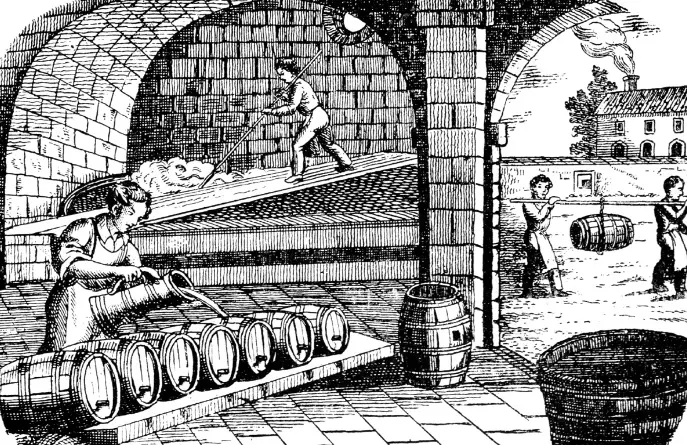
Types of Malted Grains Used for Brewing Beer
When it comes to brewing beer, one of the key ingredients is malted grains. These grains are responsible for providing the fermentable sugars needed for the yeast to work its magic and produce alcohol. But did you know that there are different types of malted grains used in brewing? Let’s take a closer look at some of the most common ones and how they contribute to the final product.
One popular malted grain used in brewing is barley. In fact, barley is the most widely used grain in beer production. It has a high enzyme content, which makes it perfect for converting starches into sugars during the mashing process. Not only does barley provide the necessary fuel for fermentation, but it also contributes to the flavor, color, and body of the beer.
Another type of malted grain commonly used in brewing is wheat. Wheat malt adds a smooth and creamy mouthfeel to beer, giving it a distinct character. Wheat beers, like hefeweizens and witbiers, are known for their light and refreshing taste, thanks to the inclusion of this grain.
Rye malt is another interesting addition to the brewer’s arsenal. Adding rye malt to a beer can impart spicy and earthy flavors, giving the brew a unique twist. Rye beers often have a slightly dry and crisp finish, making them a favorite among craft beer enthusiasts.
For those looking for a gluten-free alternative, malted sorghum or corn is a great option. Sorghum malt can be used as a substitute for barley malt in brewing, making it accessible to individuals with gluten sensitivities. It contributes to a light and refreshing flavor profile, perfect for those hot summer days.
Other malted grains used in brewing include corn, rice, and oats. These grains can add different characteristics to the beer, such as sweetness, smoothness, or even a creamy texture. They offer brewers a wide range of possibilities when it comes to creating unique flavor profiles.
In conclusion, the types of malted grains used in brewing beer play a crucial role in the final product. Whether it’s barley for its enzymatic power, wheat for its smoothness, or rye for its spiciness, each grain brings its own unique contribution to the brewer’s palette. So, the next time you crack open a cold one, take a moment to appreciate the craftsmanship behind the choice of malted grains that went into creating your favorite beverage.
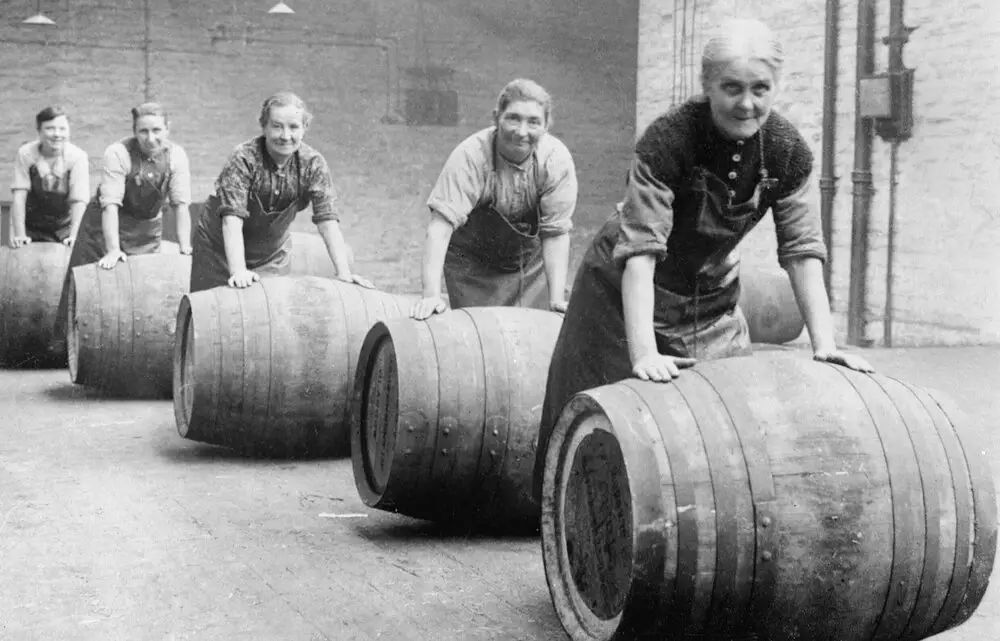
3. Yeast
Now let’s talk about one of the most crucial ingredients in beer: yeast. This humble microorganism plays a vital role in the fermentation process, converting the fermentable sugars in the wort into alcohol and carbon dioxide.
There are two primary types of yeast used in brewing: ale yeast and lager yeast. Ale yeast, also known as Saccharomyces cerevisiae, is characterized by its ability to ferment at warmer temperatures (between 15-24°C or 59-75°F). This yeast produces fruity and estery flavors, contributing to the unique taste profiles of certain beer styles like ales, porters, and stouts. Ale yeast typically works faster than lager yeast, often completing fermentation within a week or so.
On the other hand, lager yeast, scientifically known as Saccharomyces pastorianus, prefers cooler temperatures (around 7-13°C or 45-55°F) and undergoes a longer fermentation period. This yeast produces fewer esters and imparts a clean and crisp flavor to lagers and pilsners. Lager yeast can differ in strains, with some known for their ability to produce more sulfurous compounds that add a slightly sulfuric note to the beer.
But wait, there’s more to yeast than just the two main strains. Brewers also experiment with wild yeasts and different yeast strains to create unique and interesting flavor profiles. Wild yeasts, like Brettanomyces, can add funky and sour notes, giving rise to beer styles such as lambics and sour ales. Additionally, some Belgian beer styles are known for their use of specific yeast strains that contribute to their distinct flavors and aromas.
Yeast also contributes to the overall character of the beer by influencing its alcohol content. During fermentation, yeast consumes sugars and produces alcohol as a byproduct. Different yeast strains have varying alcohol tolerance levels, which can impact the final alcohol content of the beer. This is an important consideration for brewers when selecting the right yeast for their desired beer style.
So, next time you enjoy a refreshing pint or explore new beer flavors, raise a glass to yeast for its role in creating the delightful, effervescent beverage we call beer. Cheers to the wonders of yeast, the unsung hero in every brewer’s arsenal!
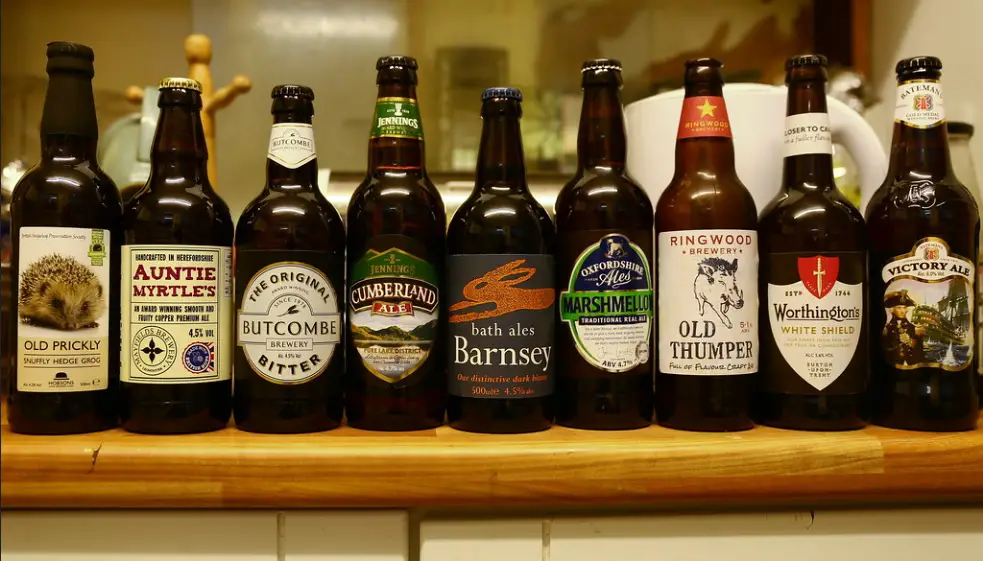
Types of Yeast Used in the Brewing Process
When it comes to brewing beer, yeast plays a crucial role in determining the flavor, aroma, and even the alcohol content of the final product. There are several types of yeast that brewers use, each with its own unique characteristics.
The most common types of yeast used in the brewing process are ale yeast and lager yeast. Ale yeast, scientifically known as Saccharomyces cerevisiae, is a top-fermenting yeast that works best at warmer temperatures ranging from 15-24°C or 59-75°F. This type of yeast produces fruity and estery flavors, which contribute to the distinct taste profiles of ales, porters, and stouts. Did you know that ale yeast is responsible for the rich and complex flavors in traditional British IPAs?
On the other hand, lager yeast, also known as Saccharomyces pastorianus, is a bottom-fermenting yeast that prefers cooler temperatures around 7-13°C or 45-55°F. Unlike ale yeast, lager yeast ferments the beer at lower temperatures over a longer period of time. This results in a clean and crisp flavor profile, making it ideal for brewing lagers and pilsners. In fact, lager yeast is the key ingredient behind the refreshing taste of a classic German Oktoberfest beer.
But yeast diversity doesn’t stop there! Brewers often experiment with different yeast strains and even wild yeasts to create unique and interesting beer flavors. One example is Brettanomyces, a wild yeast that can add funky and sour notes to beer. This yeast is commonly used in the production of lambics and other sour ales, giving them their distinctive tangy character. Belgian beer styles are known for their use of specific yeast strains, such as the Trappist yeast, which adds spicy and fruity flavors to beers like Tripels and Dubbels.
Aside from flavor and aroma, yeast also influences the alcohol content of the beer. During fermentation, yeast consumes fermentable sugars and produces alcohol as a byproduct. Different yeast strains have varying levels of alcohol tolerance, which can impact the final alcohol content of the beer. This is why brewers carefully select the appropriate yeast strain based on their desired beer style and target alcohol levels.
So the next time you have a sip of your favorite beer, take a moment to appreciate the hard work and impact of yeast in creating those delicious flavors. Whether it’s the fruity notes of an ale, the crispness of a lager, or the funky complexity of a wild-fermented brew, yeast is one of the essential ingredients that give beer its character.
Lager Yeast vs Ale Yeast
When it comes to brewing beer, one of the key ingredients that plays a crucial role in determining the final flavor and characteristics is yeast. Yeast is responsible for the process of fermentation, converting sugars into alcohol and carbon dioxide. And there are two main types of yeast that brewers rely on: ale yeast and lager yeast.
Ale yeast, known as Saccharomyces cerevisiae, is a top-fermenting yeast. This means that it rises to the surface and works its magic at warmer temperatures, typically ranging from 15-24°C or 59-75°F. This type of yeast produces fruity and estery flavors, giving ales, porters, and stouts their unique and complex taste profiles. In fact, it is the ale yeast that gives traditional British IPAs their rich and distinct flavors.
On the other hand, there is lager yeast, also known as Saccharomyces pastorianus. Unlike ale yeast, lager yeast is a bottom-fermenting yeast, which means it settles at the bottom of the fermentation vessel. This yeast prefers cooler temperatures, around 7-13°C or 45-55°F, and ferments the beer at these lower temperatures over a longer period of time. The result is a clean and crisp flavor profile, making it the perfect yeast for brewing lagers and pilsners. If you’ve ever enjoyed a refreshing German Oktoberfest beer, you can thank the lager yeast for that.
But it doesn’t stop there. Brewers are always experimenting with different yeast strains to create unique and interesting flavors. Some even venture into using wild yeasts, like Brettanomyces, which adds funky and sour notes to beer. This wild yeast is commonly used in the production of lambics and other sour ales, giving them their distinctive tangy character. Belgian beer styles, on the other hand, are known for their use of specific yeast strains, such as the Trappist yeast, which adds spicy and fruity flavors to beers like Tripels and Dubbels.
Yeast not only contributes to the flavor and aroma of beer but also plays a role in determining the alcohol content. During fermentation, yeast consumes the fermentable sugars and converts them into alcohol. Different yeast strains have varying levels of alcohol tolerance, which can impact the final alcohol content of the beer. This is why brewers carefully choose the appropriate yeast strain based on their desired beer style and target alcohol levels.
So, whether it’s the fruity and estery flavors of an ale or the clean and crisp taste of a lager, yeast is one of the essential ingredients that adds that special touch to your favorite beer. Cheers to the power of yeast and the incredible flavors it brings to our glasses!
Wild Yeasts and Their Effects on Fermentation Processes
When it comes to brewing beer, there’s a world of possibilities. One fascinating aspect of the brewing process is the use of wild yeasts. These untamed microorganisms bring unique and sometimes unpredictable flavors to the fermentation process.
Wild yeasts, such as Brettanomyces, are often found in the natural environment, particularly on fruit skins and in the air. Unlike their domesticated counterparts, wild yeasts can introduce funky and sour notes to beer, adding a whole new dimension to its flavor profile.
One of the most famous beer styles that utilizes wild yeasts is the lambic. Lambics, originating from Belgium, undergo spontaneous fermentation using airborne wild yeasts and bacteria. This traditional method results in tart, complex, and slightly acidic beers that beer enthusiasts around the world adore.
Wild yeasts can also be deliberately introduced into the brewing process to create unique and experimental beer styles. Some brewers embrace these wild yeasts to make sour ales, which have gained popularity in recent years. These beers often feature tangy, fruity, and sometimes even barnyard-like flavors, which can be an acquired taste for some but are loved by others.
However, working with wild yeasts can be challenging for brewers. These yeasts are unpredictable and can be more difficult to control compared to traditional brewing yeasts. They can take longer to ferment, require additional aging time, and may even introduce off-flavors if not managed properly.
Despite these challenges, many brewers have embraced the creativity and complexity that wild yeasts offer. They see them as an opportunity to push the boundaries of traditional beer styles and create truly unique brews.
It’s worth noting that not all wild yeasts are created equal. Different strains of wild yeast can produce varying flavors and aromas. This is why brewers carefully select specific strains to achieve their desired flavor profiles. Some wild yeast strains may have a more pronounced tartness, while others may contribute more fruity or earthy characteristics.
In conclusion, wild yeasts are an exciting component of the brewing process. They introduce a level of unpredictability and complexity to beer, resulting in brews that are anything but ordinary. Whether you’re a fan of sour ales or simply enjoy exploring new flavors, wild yeast-fermented beers are definitely worth a try. So next time you’re selecting a beer, why not seek out one that embraces the wild side? Cheers to the adventurous world of wild yeasts and their effects on fermentation processes!

4. Hops
When it comes to beer, hops are an essential ingredient that plays a crucial role in determining its flavor and aroma profiles. Hops are the flowers of the hop plant, scientifically known as Humulus lupulus, and they bring both bitterness and aroma to beer.
One of the primary reasons why hops are added to beer is to balance out the sweetness of the malted barley. Hops contain alpha acids, which are responsible for the bitter taste in beer. These acids act as a natural preservative, extending the beer’s shelf life while also providing a pleasing bitterness.
But hops do much more than just add bitterness. They also contribute to the aromatics of the beer. Different varieties of hops can offer a wide range of aromas, from floral and fruity to herbal and citrusy. These aromatic compounds are released during the brewing process, infusing the beer with a delightful and inviting scent.
Hops also play a significant role in the foam stability of beer. The compounds present in hops help to create a dense and long-lasting foam head, making beer not only visually appealing but also enhancing the overall drinking experience.
Hops also contribute to the clarity of beer. The antimicrobial properties of hops help to inhibit the growth of certain bacteria, ensuring that the beer remains clean and free from any unwanted contaminants.
In addition to their flavor and aroma benefits, hops also contribute to beer’s overall mouthfeel. Hop oils and resins add a certain level of texture and body to the beer, creating a satisfying and well-rounded drinking experience.
When it comes to selecting hops for brewing, brewers have A LOT of options available. Different hop varieties have distinct characteristics, and brewers carefully choose the specific hops that align with their desired flavor profiles. Some popular hop varieties include Cascade, Centennial, Citra, and Chinook, each offering its unique combination of flavors and aromas.
It’s interesting to note that hops have been used in beer brewing for centuries. They were initially added to beer for their preservative properties, allowing beer to be stored for longer periods. Over time, brewers discovered the additional benefits of hops, leading to the development of various beer styles that heavily rely on these flavorful flowers.
So, the next time you enjoy a cold beer, take a moment to appreciate the hops that contribute to its unique taste, aroma, foam, and mouthfeel.
Alpha Acids, Essential Oils, and Bitter Flavors From Hops
Hops: Adding Alpha Acids, Essential Oils, and Bitter Flavors
When it comes to beer, hops are like the superhero that saves the day. These small green cones not only contribute to the bitterness of your favorite brew, but they also bring a whole lot more to the table. Let’s dive into the fascinating world of alpha acids, essential oils, and bitter flavors from hops!
Alpha acids, found within the bitter resin of hops, are responsible for that satisfying kick of bitterness in your beer. Did you know that the average hop contains around 10-15% alpha acids? These bitter compounds are crucial for balancing out the sweetness of the malted barley, creating a harmonious flavor profile. Looking for a hop with a higher alpha acid content? Look no further than hop varieties like Magnum or Columbus, which can reach as high as 18-20%.
But hops don’t stop at bitterness. They also possess essential oils that bring a whole new dimension to your pint. These oils contribute to the distinct aromas we associate with different beer styles. From floral and fruity to herbal and even citrusy, the possibilities are endless. Take, for example, hops like Citra or Amarillo, which pack a punch of tropical fruitiness, transforming your beer into a fragrant paradise.
In addition to bitterness and aroma, hops play a crucial role in foam stability. The compounds within hops help to create a dense and long-lasting foam head, making every beer pour picture-perfect. Say goodbye to froth that disappears as soon as you take a sip. Thanks to hops, your beer will stay looking beautiful until the very last drop.
Hops also bring clarity to your beer. The antimicrobial properties present in hops act as a natural defense system against unwanted bacterial growth. This ensures that your favorite brew remains clean and free from any unwanted contaminants, prolonging its shelf life. So, when you enjoy a beer that’s not only delicious but also crystal clear, you can thank the hops for keeping it in top shape.
Lastly, let’s talk about the mouthfeel that hops contribute to your beer. The hop oils and resins add a certain level of texture and body, creating a well-rounded drinking experience. Whether it’s a refreshing and crisp lager or a robust and full-bodied stout, hops play a vital role in enhancing the overall mouthfeel, making each sip a delight for your taste buds.
With so many different hop varieties to choose from, brewers have a world of possibilities at their fingertips. Hop breeds like Cascade, Centennial, and Chinook offer their unique combination of flavors and aromas, allowing brewers to craft beer styles that suit their preferences and excite their customers.
So, the next time you savor a pint of beer, take a moment to appreciate the remarkable contribution of hops. From alpha acids to essential oils and the bitter flavors they bring, hops truly elevate the brewing process, adding depth, character, and a whole lot of deliciousness to your favorite beverage. Cheers to the amazing hops that make our beer adventures so incredibly enjoyable!

Different Types of Hops Used in Beer Styles
When it comes to brewing beer, the types of hops used can make all the difference. Each hop variety brings its own unique combination of flavors and aromas, allowing brewers to create beer styles that cater to a wide range of taste preferences.
One popular hop variety is Cascade. Known for its citrusy and floral characteristics, Cascade hops are often used in pale ales and American IPAs. These hops pack a punch of grapefruit and pine flavors, adding a refreshing and zesty twist to your pint.
Another hop variety that beer enthusiasts rave about is Centennial. With its pronounced floral aroma and hints of citrus, Centennial hops are commonly found in American IPAs and double IPAs. These hops lend a bold and assertive bitterness, making each sip a memorable experience.
If you prefer a more piney and resinous flavor profile, look no further than Chinook hops. These hops are often used in IPAs and stouts, bringing a robust and earthy character to the beer. Chinook hops are known for their high alpha acid content, making them perfect for adding a strong bitter kick.
For those seeking a tropical and fruity punch, hops like Citra and Amarillo are the go-to choices. These hops burst with notes of mango, passionfruit, and citrus, lending a tropical paradise vibe to your beer. Citra hops are particularly popular in hazy IPAs, while Amarillo hops are a favorite in American pale ales.
If you’re a fan of European beer styles, noble hops like Saaz and Hallertau are essential ingredients. These traditional hop varieties are known for their delicate and spicy aroma, providing a subtle and refined bitterness to lagers and pilsners. These hops are prized for their versatility and are often used in a wide range of beer styles.
In addition to these well-known hop varieties, there are countless others to explore and experiment with. From the floral and herbal notes of Fuggle and Willamette to the pine and caramel flavors of Simcoe and Columbus, the world of hops is vast and exciting.
So, the next time you enjoy a pint of your favorite beer, take a moment to appreciate the flavors and aromas that the hops bring. Whether it’s a citrusy burst, a piney punch, or a delicate spice, hops play an essential role in creating the vibrant and diverse world of beer styles. Cheers to the endless possibilities that hops offer to brewers and beer lovers alike!

I am a young architect with a passion that goes beyond blueprints… it’s beer! undertherosebrewing.com is more than just a blog, it’s a manifestation of my lifelong dream to explore, read, and learn everything about beer. Join the blog on this unfiltered and genuine adventure into the heart of beer culture. Cheers!

